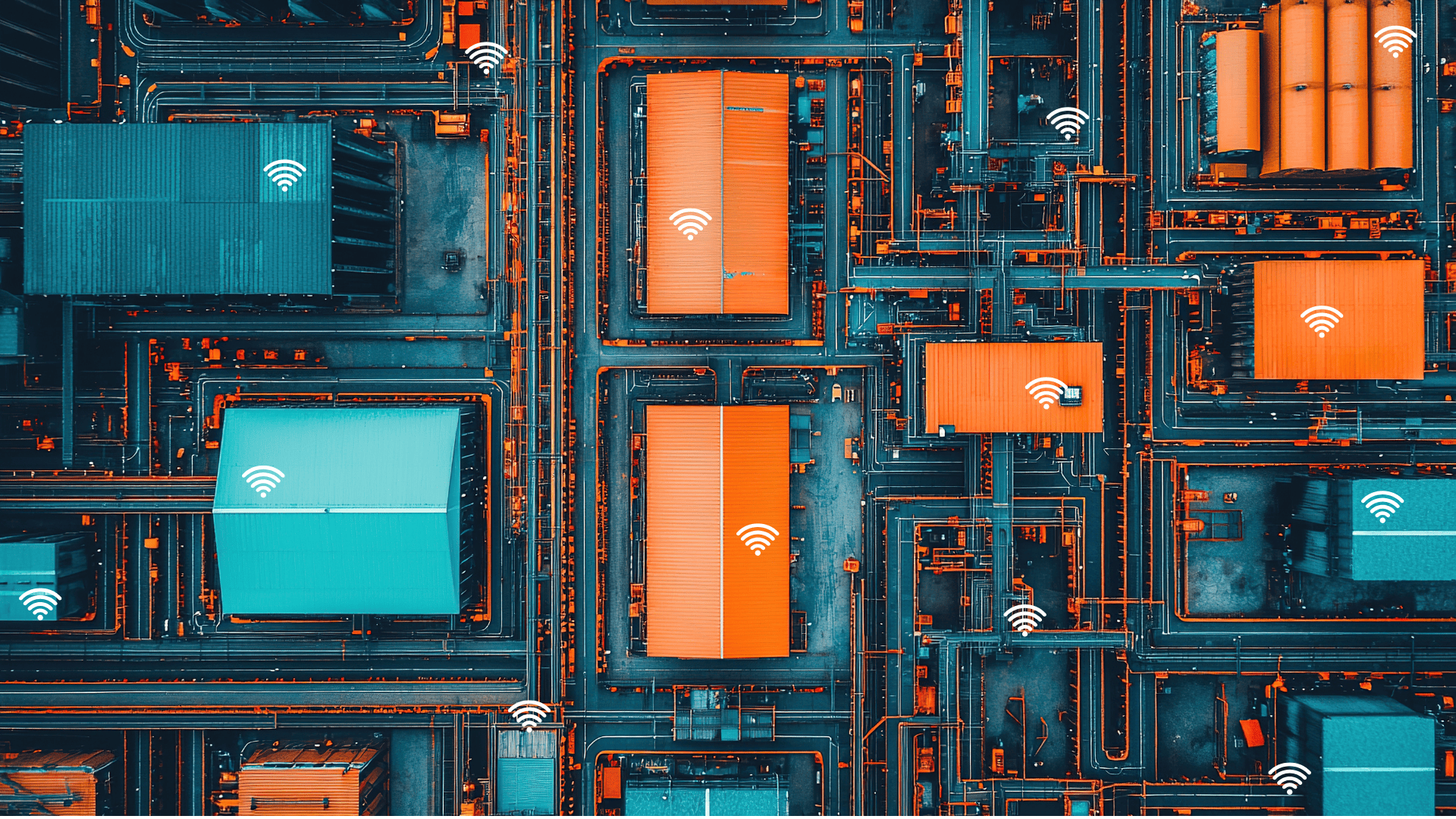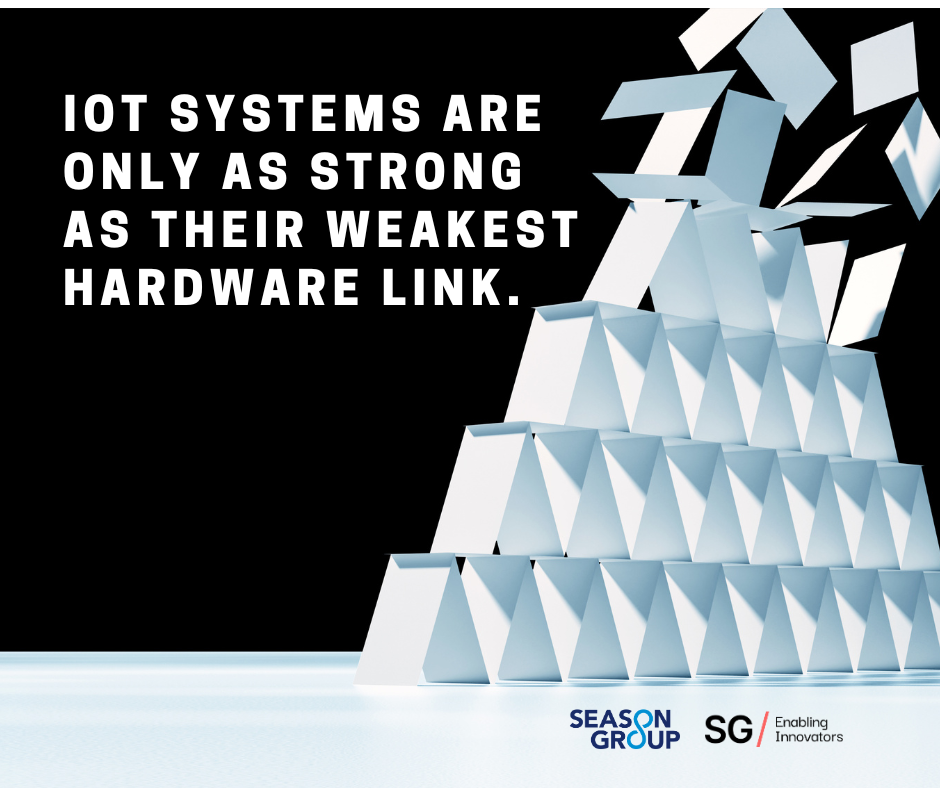Your basket is currently empty!
Optimizing IoT Rollouts with Cellular Connectivity and Zero-Touch Automation

Authored by SG Wireless and initially published on 1NCE’s blog, this piece highlights our joint efforts to simplify and scale IoT deployments.
The Internet of Things (IoT) is no longer a futuristic concept – it’s already part of our everyday lives. As the number of IoT devices grows into the billions, the real challenge isn’t connecting them, it’s doing so at scale, across regions, securely and without breaking the budget.
That’s where cellular IoT and zero-touch provisioning (ZTP) step in. Together, they make large-scale deployments faster and easier, even when devices are scattered across cities, countries, or continents. SG Wireless teamed up with 1NCE to create the F1 Starter Kit, which includes a global SIM and is ready to go right out of the box.
Scaling Up Without Slowing Down
The cellular IoT market is on a serious growth streak, set to jump from around $7.2 billion in 2024 to more than $25 billion by 2029 (1). That growth is driven by technologies like LTE-M and NB-IoT, which offer strong coverage, low power consumption, and efficient data use. With major network rollouts already in place, IoT devices can now connect more easily across borders and regions.
However, scaling IoT deployments to thousands or millions of devices introduces operational complexities. Manually setting up each one is time-consuming, expensive, and often tricky, especially if devices are deployed in remote or hard-to-reach places. Zero-touch provisioning (ZTP) automates the onboarding process so devices can securely connect and configure themselves as soon as they’re powered on – no on-site setup required. Here’s how it generally works in IoT:
- Factory Preparation: IoT devices come from the factory with unique identifiers (like serial numbers or security certificates) and basic software already in place.
- Initial Connection: When a device first connects to a network (like Wi-Fi, Ethernet, or cellular), it automatically links up with a ZTP server or a cloud platform.
- Identification and Authentication: The device presents its unique identifier. The ZTP server or IoT platform then checks its authenticity and authorizes it.
- Configuration Download: Once authenticated, the device automatically downloads all the necessary settings, firmware, security updates, and application-specific software tailored to its role and location.
- Ready for Use: The device is now fully configured and ready to operate, with no manual input required.
What Zero-Touch Provisioning Brings to IoT
With ZTP, devices come preloaded with the credentials and firmware they need. Once powered on, they automatically connect to a server, download their settings, and start working, with no technical setup required. This approach offers several key benefits:
- Easy setup: Devices can be deployed by simply connecting them to power so that no technical expertise or on-site configuration needed.
- Saving time and costs: Automation cuts down on manual work and field visits, speeding up rollouts and reducing operational costs.
- Ready to scale: Devices can be pre-configured in bulk and deployed quickly, even across multiple locations or regions.
- Built-in security: Secure connections and certificate-based authentication help protect against misconfigurations and unauthorized access right from the start.
SG Wireless’ F1 Starter Kit, integrated with the 1NCE global SIM, shows ZTP in action. Users only need to connect the Kit to power to have it securely connected and operational, streamlining the deployment process for businesses of all sizes.
ZTP and Multi-Connectivity
Multi-connectivity enables IoT devices to connect across various cellular technologies (4G LTE, 5G NR, NB-IoT) and complementary networks like Wi-Fi or LoRaWAN, enhancing coverage and reliability. By dynamically selecting the strongest available signal, devices can maintain continuous operation, even in areas with unstable connectivity or during carrier outages. Zero-Touch Provisioning (ZTP) simplifies and automates the entire setup process for multi-connectivity, removing the need for manual configuration and accelerating deployment at scale. Key capabilities include:
- Automated SIM/eSIM Profile Management, allowing remote download and activation of carrier profiles for global deployments.
- Dynamic Network Selection Logic, which pushes intelligent rules to devices so they can autonomously switch networks based on performance, cost, or latency.
- Secure Credential Management, ensuring encryption keys and certificates are provisioned securely for trusted communication across different networks.
- Firmware Over-the-Air (FOTA) Updates, enabling remote updates to maintain performance, improve connectivity, and patch vulnerabilities.
By combining ZTP with multi-connectivity, IoT solutions become more resilient and easier to manage, especially in demanding environments like industrial monitoring, where uninterrupted data flow helps prevent downtime, reduce operational costs, and improve ROI.
From Device to Cloud: Staying Connected, Managed, and Secure
Connecting a device is just the first step. You also need to:
- Monitor its status
- Push firmware updates
- Keep its data secure
That’s why today’s IoT solutions often combine connectivity with cloud-based management platforms. Businesses can track their entire device fleet from a dashboard, update software remotely, and catch issues before they become problems. SG Wireless and 1NCE’s joint solution integrates connectivity with device management, enabling over-the-air updates and real-time monitoring through cloud dashboards. This end-to-end approach ensures devices remain secure, up-to-date, and operational throughout their lifecycle.
What’s Next for Scalable IoT?
The shift toward cellular IoT and ZTP fits into broader industry trends: smaller, smarter, and more distributed systems. Edge computing is pushing intelligence closer to the devices. Meanwhile, modular designs and plug-and-play capabilities are making it easier to launch and expand IoT services without heavy technical lift.
Here are a few examples of how this plays out:
- Smart Cities: Millions of sensors in traffic lights, waste bins, and air monitors that work without needing technicians on a ladder.
- Industrial Monitoring: Real-time alerts from machinery in remote factories that can’t afford downtime.
- Healthcare: Wearables that update securely from afar and help doctors track patients without hospital visits.
As IoT goes mainstream, the winners will be those who can scale fast without losing control. Technologies like cellular IoT and zero-touch provisioning are helping to make that possible – not just for tech giants, but for startups, municipalities, and businesses across every industry.




